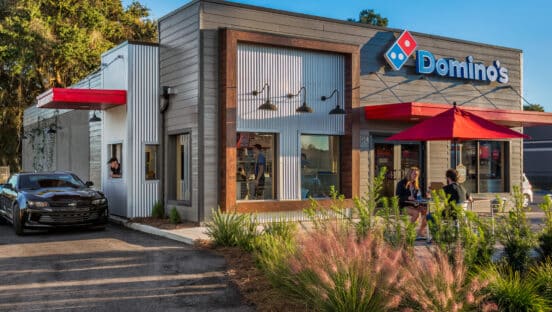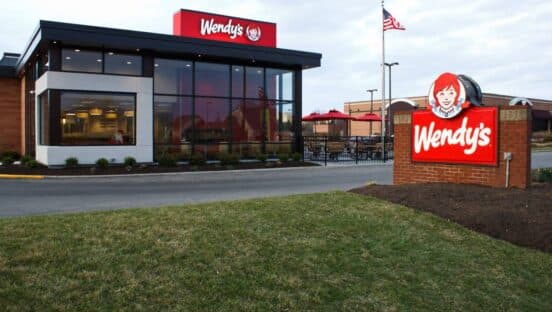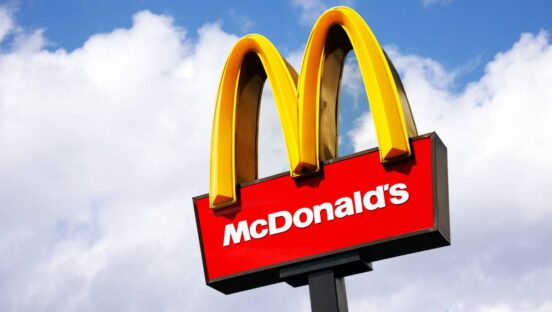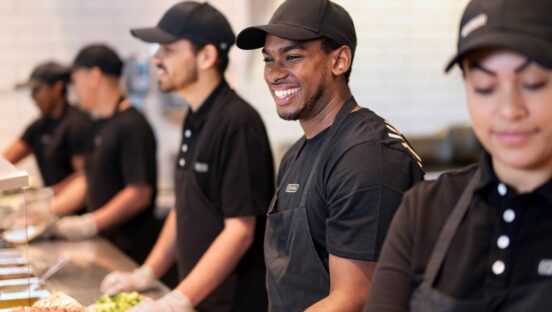A “significant shakeout,” is coming to the delivery space, Domino’s chief executive officer Ritch Allison told investors Wednesday morning. It even led the world’s largest pizza chain to label the typical 3- to 5-year-outlook irrelevant due to evolving market conditions and resulting uncertainty. Instead, Domino’s narrowed its view to a 2- to 3-year horizon—a decision Allison called proactive “in light of the current competitive landscape.”
The reason is a familiar culprit: A dynamic market stirred up by new entrants into the quick-service delivery space. Namely, restaurants benefiting from the financial support of aggregators seeking to buy market share. “These players are currently pricing below the cost to serve,” Allison said, “offering free delivery or other deep discounts that are currently enabled by investor subsidy.”
Domino’s, and other chains that rely heavy on self-delivery, just don’t have visibility into how long this disruption will continue.
The near-term effect, though, is two-fold. Same-store sales are being pressured by third-party intrusion and Domino’s own fortressing strategy, which looks to cluster markets, shrink territory for deliveries, and, in turn, improve the wage rate equation for drivers and franchisees, as well as bolster carryout business and service times.
READ MORE: How Domino’s is punching back against third-party delivery.
Domino’s U.S. same-store sales climbed 2.4 percent in the third quarter that ended September 8, announced Wednesday. It marked the lowest figure in seven years (Q2 2012). Domino’s international division upped comps 1.7 percent. Despite the relative slowdown, the chain has put together 34 consecutive periods of domestic gains and 103 on the international side. Additionally, Domino’s opened 214 global net stores in Q3, including 40 in the U.S. The brand has brought 1,174 restaurants to market over the past 12 months.
Domino’s shares on the stock market initially dipped following Wednesday’s report. Mostly due to a lowered outlook of global sales growth of 7–10 percent from 8–12 percent, and same-store sales of 2–5 percent from 3–6 percent. Its stock recovered, however, once Allison began diving into the realities at hand, essentially telling investors to adopt a helicopter view to current stress points as opposed to overreacting.
And delivery dominated that debate. One reason Domino’s is fortressing and being aggressive in new-store builds, Allison said, is because there’s ample chance in the impending drama. “We’ve got a unique opportunity right now to solidify market share gains for the long-term as our competitors retreat and as these third parties fundamentally alter the economics of many players in the restaurant industry,” he said.
It’s time to go on the offense, Allison added.
Domino’s launched its “delivery insurance” campaign, which has been a prominent TV feature in the recent weeks. It’s a spin off the company’s “carryout insurance” that offers customers a free replacement if something goes wrong. Domino’s extended the service to delivery to reinforce “our commitment,” Allison said, and to put “our money where our mouth is.” The deal also provides real-time feedback.
“If you offer to mow my lawn for free, I’m going to say yes. When you come and charge me for it, I might just go out there and push the mower around myself.” — Domino’s CEO Ritch Allison.
Domino’s then introduced a campaign adding variety to its $7.99 carryout deal to drive orders and ticket to a rapidly growing corner of its business—carryout—which is approaching 45 percent of total domestic orders, Allison said.
Lastly, the brand unveiled a 20 percent off late-night deal that represented the first time Domino’s has tried incremental value dedicated to the daypart (9 p.m. and later). The reason behind this is straightforward, too. Quick-serves typically generate a sizable amount of delivery sales late night, and that’s blown up in light of third-party expansion.
“We expect an eventful calendar in the coming quarters as Domino’s builds on the recent late-night promotion with the rollout of GPS driver tracking and likely menu innovation, all of which suggests a more aggressive posture to stabilize its delivery business,” BTIG analyst Peter Saleh wrote in a Thursday note.
More on the “shakeout”
Allison said there’s clear evidence of instability. You see some pizza chains experiencing more difficultly as evidenced by closures, particularly due to higher labor cost markets. Domino’s runs at a very high volume on a per unit level. But as these costs rise, if you’re not doing so, Allison said, it just gets increasingly challenging to survive.
“It also gets more and more difficult to compete in a pizza delivery business if you’re not shrinking down the radius of your territory for delivery because that is the key—that wage rate is the key driver,” he said. “And you really have to improve over time the number of deliveries per driver, per hour that you can get.”
The current landscape is a pizza industry under pressure from labor costs that is also transitioning volume from dine-in to delivery without an increase in terms of overall growth in the restaurant industry. It’s left a lot of brands to trade orders from a more profitable to a less profitable channel while wage rates go up.
“So that is why when we talk about a shakeout to come, this is not an industry that starts with 40 percent profit margins typically,” he said. “There is not a lot of room for some of these players to cede margin to a third party on one end, while labor costs are going up on the other.”
Allison added that we still really don’t know how behavior will evolve for customers accessing third-party delivery. As the full cost, or at least some, is taken on by the guest, what will ultimately happen to their spending habits?
“We don’t know the answer to that yet,” Allison said. “But what we do know is, we know a whole lot about the elasticity of demand in the pizza category.”
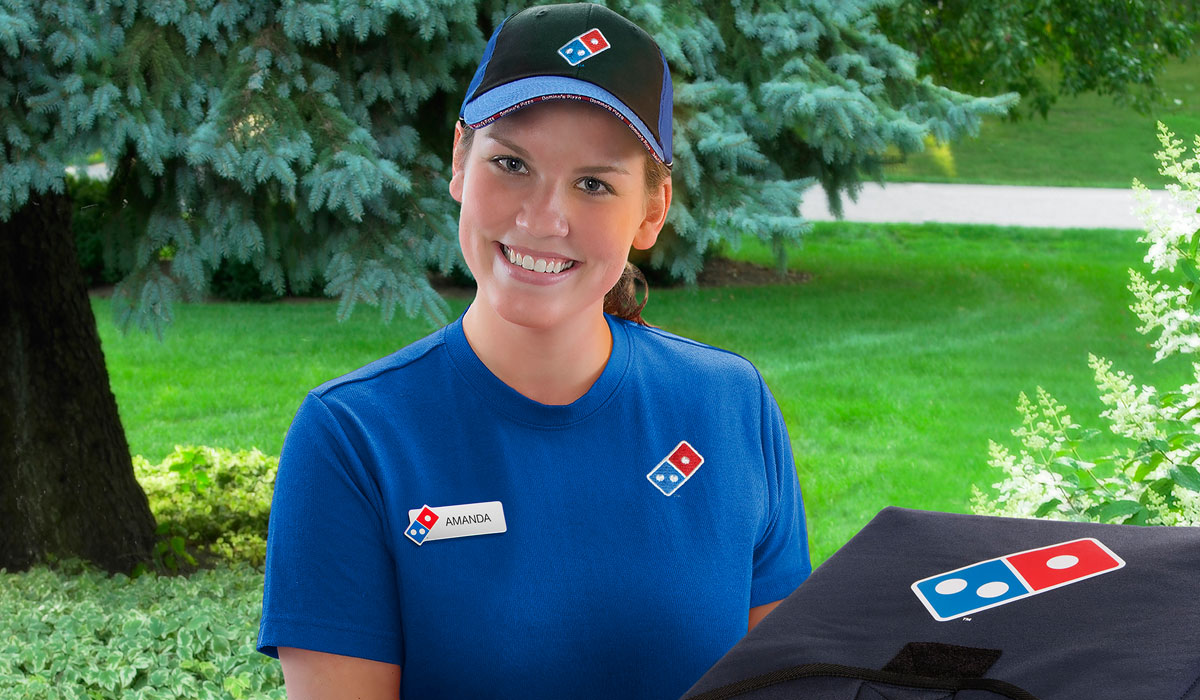
Domino’s has roughly 6,000 U.S. stores where franchisees have the ability to set their own prices for delivery charges and menu items. “What we expect over time is that there will be some equilibrium,” he said. “Once the cost to get food delivered to you has to fully support the effort that it takes to get it there—only then will we know ultimately where this thing falls.”
Yet if Allison had to guess, he doesn’t see the same number of customers using third party when they have to pay for it after the free deals run out.
“If you offer to mow my lawn for free, I’m going to say yes. When you come and charge me for it, I might just go out there and push the mower around myself,” he said.
The fortress and carryout element
Domino’s expects to fortress its seven corporate markets completely within the next three years. That could drag comps a bit, but it’s a long-game play, Allison said.
Firstly, it drives near-term cash-on-cash returns, he said, which creates a compelling proposition. But mostly, it reinforces Domino’s strengths by taking service up a notch—something that will put the brand in a position of power once the “shakeout” takes form.
Allison provided an example. In Lewisville, Texas, Domino’s has three stores. The worst-performing unit averaged 16.5 minutes for delivery with zero orders over 45 minutes.
“When we go out there and fortress not only do we create great economics for our stores, our franchisees, and for the drivers that are delivering these pizzas, but also this is just an unmatched experience around customer service,” he said.
Domino’s previously offered a look at its Las Vegas 12-month realignment that included three restaurants.
Twelve months post (four stores), here were the results for store cluster:
- Average annual sales per store/year: plus $42,120
- Average carryout sales per store/year: up $81,640
- Net promoter score: Better by 12
- Average EBITDA per year/year: plus $16,654
“These are the kinds of things when our franchisees see this and when we see it with our corporate store business, it gives us more conviction that the right thing to do while we are playing in a position of great strength here with our unit economics is to go faster and to take advantage of this disruption in the marketplace,” Allison said.
An investor asked Allison to explain the difference between if Domino’s delivery orders are profitable versus competitors using third party.
He declined getting into third party but did offer a look into the chain’s model.
Domino’s restaurants cost about $350,000 or so on average to build. And then the company runs two business through those boxes that are complementary—delivery and carryout. The dynamics are different but they work together in a way that gives Domino’s a “really profitable pizza production engine that then allows us to offer delivery.” Allison said.

The key, though, as is the case with any restaurant business in this category, is that some of those orders are going to be more profitable than others. A large ticket order 200 yards from the store is going to have phenomenal profitability,” Allison explained. Yet if Domino’s takes a $15 order nine minutes away from the store where labor is $15 an hour, it’s not going to be as cost effective. “But because we’re running so much volume through this box, both in the carryout channel and the delivery channel, it gives us an opportunity to then drive great economics for the franchisee in a way that also allows us to offer compelling value to the customer,” he said.
“And we just believe that that captive system is a much more efficient business mode than a business model that has a restaurant that is separate from a third-party service that ultimately does the deliveries,” Allison added.
Fighting for drivers
With unemployment hovering around 3.5 percent and at 50-year lows, Allison said Domino’s is “most certainly” competing in a tight labor market. “The interesting thing is, when we go around, the franchisees that are really focused don their teams and investing in the growth and development of their teams—they are fully staffed is what I’m hearing in the marketplace,” he said. “They’re making it happen and we’re getting terrific delivery service.”
But that’s not the case nationwide. “We do have open positions for drivers in a lot of markets around the country where, frankly, we just got to get better,” Allison added.
Positively, he thinks the gig economy lends itself to drivers rejoining the company when they realize there aren’t as many flexible jobs. It’s also on Domino’s to effectively illustrate the opportunity at hand. About 90 percent of U.S. franchisees started as drivers. The brand has a franchise management school in Ann Arbor, Michigan. “We see the same store there,” he said. “We see folks who started as drivers … and worked their way up through. So the battle is ongoing, but our franchisees are up to the challenge.”






